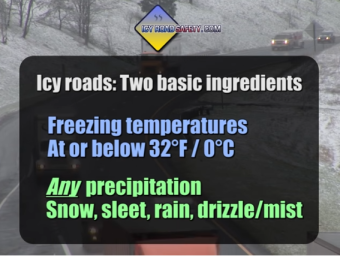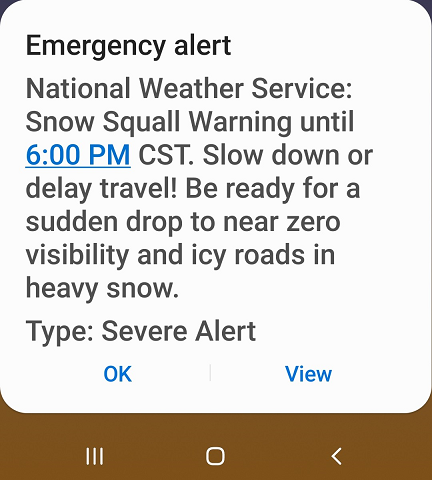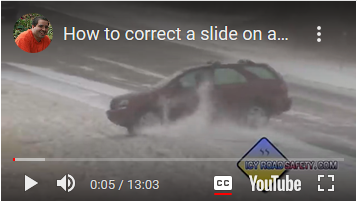The last few weeks of winter can create dangerous driving conditions. Temperature fluctuations that cause thawing and freezing weather bring icy roads, slippery ramps and overpasses. Rain later in the day may turn into a wintry mix of snow and sleet as temperatures drop below freezing.

It’s important to know the common causes of winter car accidents and how to prevent them. Below are three winter conditions that can seriously inhibit your ability to drive safely.
Slick Roads
Snow and ice accumulate on roadways during the winter months. Ice and snow make it difficult for tires to gain traction, in turn making it harder to turn, slow down, and stop a vehicle safely. When water freezes on road surfaces it can create black ice, which is hard to see and often causes drivers to lose control of their vehicles.
Slick road conditions can cause accidents such as:
- Spin-out accidents: This type of crash happens when a driver loses all control of his or her vehicle because of a slick road surface. You can reduce the risk of spin-out accidents by slowing down, particularly when making a turn. If you feel your vehicle beginning to spin out, do not try to quickly correct the skid or slam on the brakes. Instead, turn the steering wheel in the direction of the spin and gradually correct yourself.
- Sliding through intersections: The slippery surface of a road can prevent vehicles from stopping properly at red lights and stop signs, leading to collisions in intersections. The risk of these accidents can be minimized if drivers begin to reduce speed farther away from intersections in slick conditions. It is important for winter drivers to pay special attention to intersections and anticipate changes in traffic signals.
- Rear-end collisions: These occur when drivers cannot slow down or stop their vehicles before hitting the back of another car. The risk of rear-end collisions can be reduced by giving your vehicle extra space when driving in winter conditions. One of the best driving habits you can develop during the winter is to drive slowly and double, or even triple, your following distance.
Low Visibility
Visibility can be low in winter conditions. Falling snow and blowing sleet can make it hard to see even a few feet in front of your vehicle. Additionally, it can be difficult to see the road surfaces and markings when snow and ice are covering the ground. This can lead to lane-drifting accidents.
Pay attention to weather alerts and messages, they can warn you ahead of time of upcoming storms that cause visibility problems and dangerous road conditions.

The risk of lane-drifting and other low-visibility accidents can be reduced by keeping an attentive eye on your surroundings. If you cannot see road markings, look for other vehicles’ tracks to follow, and maintain safe following distances at all times.
Poor Vehicle Maintenance
To drive safely in any weather environment, your vehicle must be in good condition. This is especially true for winter driving. When drivers fail to adequately maintain their vehicles, they put themselves and others on the road at considerable risk.
Just some of the many examples of poor vehicle maintenance that can cause winter accidents include:
- Worn tires: When tire treads are worn down, vehicles lose traction and cannot slow down, stop, or turn properly on ice and snow.
- Bad windshield wipers: When a car’s windshield wipers are dull, and/or its defrost system is malfunctioning, drivers cannot see the road clearly.
- Burnt out headlights and taillights: Not only will you have trouble seeing in front of you when your headlights are out, but others will have a harder time seeing your vehicle when its headlights or taillights are out, or when they are covered in ice, snow, or road salt residue.
AAA recommends the following tips while driving in snowy and icy conditions:
Tips for Driving in the Snow
- Drive slowly. Always adjust your speed down to account for lower traction when driving on snow or ice.
- Accelerate and decelerate slowly. Apply the gas slowly to regain traction and avoid skids. Don’t try to get moving in a hurry and take time to slow down for a stoplight. Remember: It takes longer to slow down on icy roads.
- Increase your following distance to five to six seconds. This increased margin of safety will provide the longer distance needed if you have to stop.
- Know your brakes. Whether you have anti-lock brakes or not, keep the heel of your foot on the floor and use the ball of your foot to apply firm, steady pressure on the brake pedal.
- Don’t stop if you can avoid it. There’s a big difference in the amount of inertia it takes to start moving from a full stop versus how much it takes to get moving while still rolling. If you can slow down enough to keep rolling until a traffic light changes, do it.
- Don’t power up hills. Applying extra gas on snow-covered roads will just make your wheels spin. Try to get a little inertia going before you reach the hill and let that inertia carry you to the top. As you reach the crest of the hill, reduce your speed and proceed downhill slowly.
How to Correct a Slide on an Icy Road (and how to prevent them)
Educational winter driving video about preventing dangerous vehicle slides on icy roads, and what to do if one happens. Includes videos of actual accidents captured on camera.
https://www.youtube.com/watch?v=TZQXuWzBC18&feature=youtu.be [13:03]

Modified from sources: https://www.wisconsinlawyer.com and https://www.exchange.aaa.com
